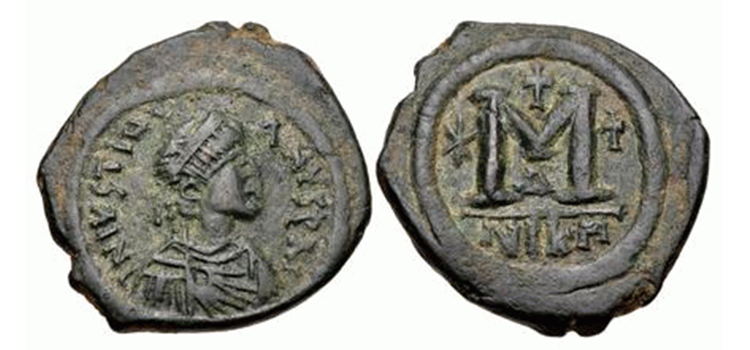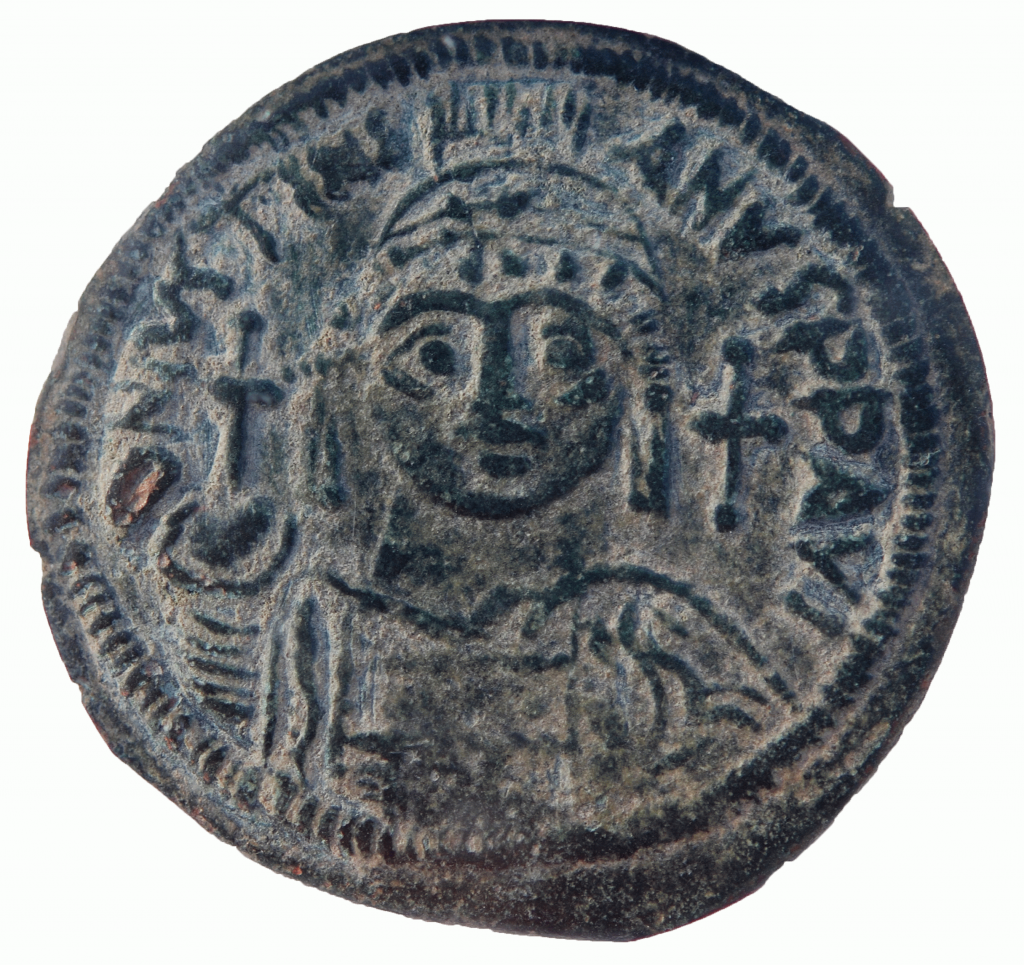Justinian I AE Follis
Roman Emperor Justinian I, Justinian the Great, ruled the Byzantine Empire from 527 A.D. to 565 A.D. Among his many accomplishments, Justinian codified all existing Roman laws in what would be known as the Codex Justinianus. Of particular interest to numismatists, Justinian eliminated pagan imagery from Roman coinage in the East.

Reign of Justinian I
Justinian was adopted by his uncle, the emperor Justin I, and groomed to succeed him. He served in the imperial guard, known as the Excubitors, and gradually rose in the ranks to command the Roman army in the east. When Justinian ascended to the throne, he was an active ruler, becoming known as the “emperor who never sleeps.”
Military conflict dominated much of Justinian’s reign. Under his rule, the Byzantine Empire was able to reclaim Rome. It also conquered much of the territory surrounding the Mediterranean Sea, including North Africa and Spain. On the home front, Justinian was nearly overthrown in 532 A.D. His generals, Belisarius and Mundus, were ultimately able to end the Nika Riots.
Justinian commissioned numerous public works projects. His Hagia Sophia church, which means “Divine Wisdom” in Greek, remains one of the most impressive Byzantine structures ever built. Justinian died in 565 A.D. Unfortunately, his ambitious military conquests and constructions projects depleted the empire’s treasury, and most of the territory he gained was lost in the decades following his death.

AE Follis of Justinian I
Justinian introduced coins portraying the emperor’s full face rather than in profile, a departure from the Roman tradition. The obverse of the follis coins typically depicted the bust of Justinian, helmeted and cuirassed, holding a cross on a globe in his right hand and a shield in his left hand.
The inscription on the obverse reads D N IVSTINIANVS PP AVG. The abbreviation DN (Dominus Noster) is displayed as the conventional beginning for imperial titulature, and includes the abbreviated title of the emperor, the perpetual Augustus: P[PER]P[ETVVS] AVG[VSTVS]. During the Roman Empire, a split legend indicated that the ruler depicted was the senior Augustus. Meanwhile, an unbroken legend typically signified a Caesar or junior Augustus. Finally, the abbreviation PP (Pater Patriae – father of his country) was added only if the Augustus was deemed worthy of the title.
On the reverse, the large M refers to the denomination (40 nummi). The coin also includes letters representing the minting location (i.e. NIK), and the year made (i.e. ANNO XII).
